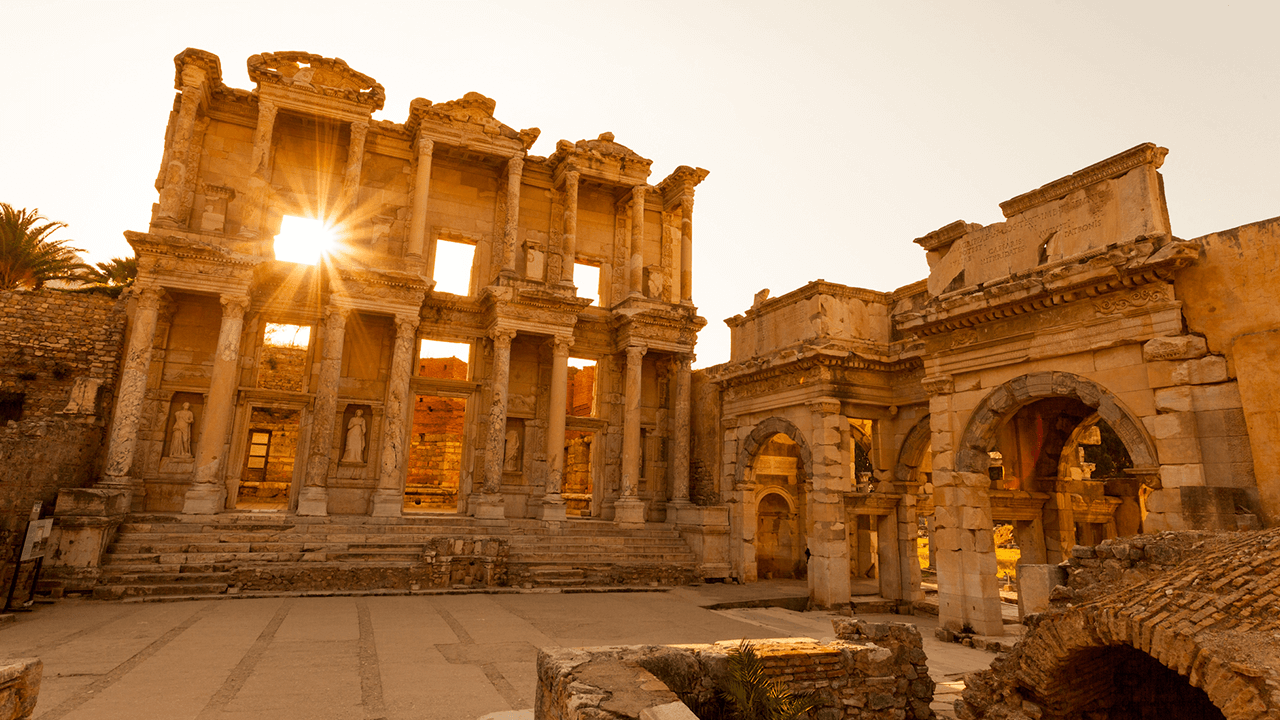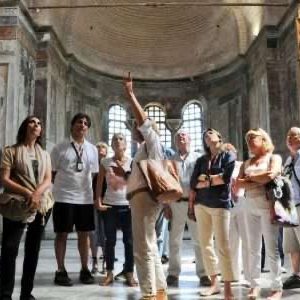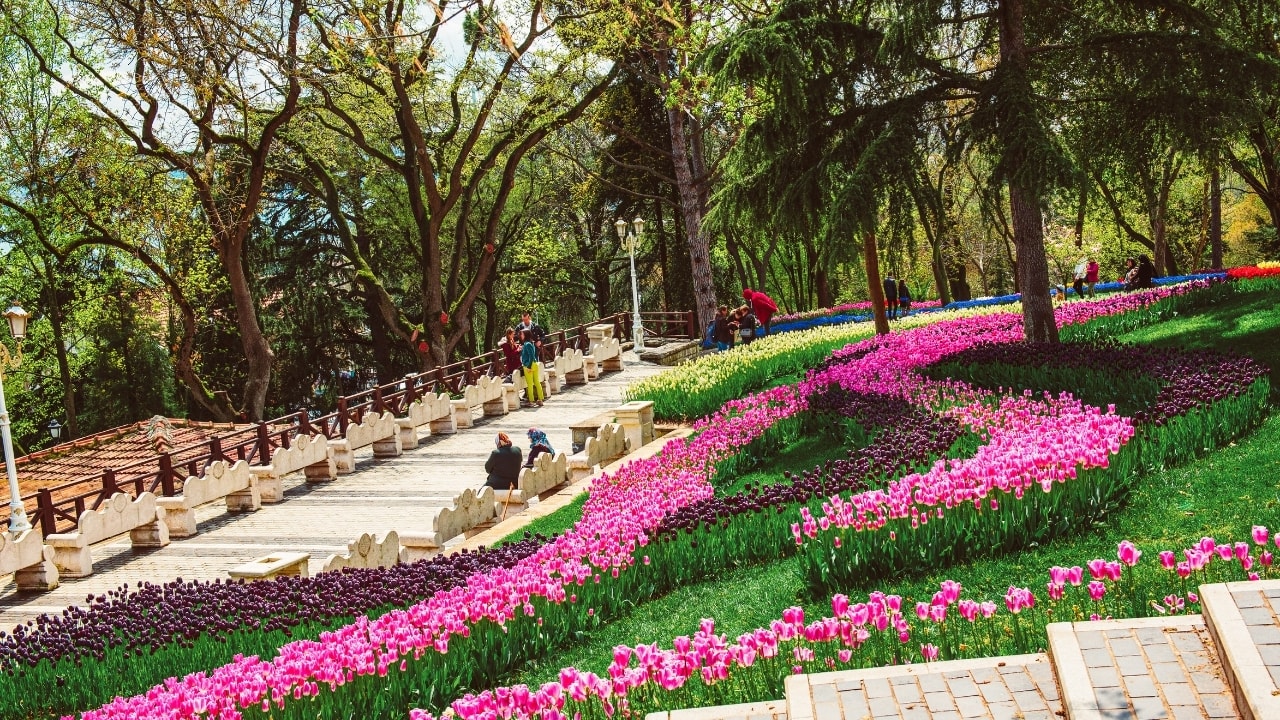The State Agora: Political and Ceremonial Center of Ephesus
Located south of the Basilica, the State Agora of Ephesus was built by the Romans in the 1st century BC. Unlike other agoras of the time, this impressive space was not used for commercial activities but served as a center for governmental meetings and official matters, making it a site of great political and ceremonial importance in the city.
History and Significance of the State Agora
Unlike the Commercial Agora, the State Agora was dedicated to public business and political discussions. It was a meeting point for the elite and local authorities, who gathered here to discuss governance and make important decisions for the city.
A Multifunctional Space
In addition to its political use, the Agora also hosted ceremonial functions, serving as a stage for official events and significant public acts. Its design and location made it a symbol of Ephesus’ power and organization under Roman rule.
Archaeological Discoveries
During excavations in the northeast corner of the Agora, tombs dating back to the 7th and 6th centuries BC were uncovered, suggesting that this area served as a necropolis during the Archaic period. Among the findings were a paved road and an archaic terracotta sarcophagus, offering a fascinating glimpse into the earlier uses of this space.
The Well and Pollio’s Aqueduct
In one corner of the Agora, a well connected to the city’s water supply system was discovered. Water was brought to the Agora and other important locations in Ephesus through Pollio’s Aqueduct, remnants of which can be seen about 5 kilometers away along the Selçuk-Aydin road.
Design and Architecture of the Agora
The State Agora measured 160 x 73 meters and was surrounded by Stoas on three of its sides. At the center of the space was a temple dedicated to the goddess Isis, dating back to the 1st century AD. This temple, surrounded by ten columns on the long sides and six on the short sides, was a central feature of the Agora’s design.
The Temple of Isis
Despite its initial importance, the temple dedicated to Isis was demolished during the reign of Emperor Augustus, who disapproved of Egyptian traditions. This building was never reconstructed, but its remains still tell stories of the connections between Ephesus and Mediterranean cultures.
Statues of Odysseus and Polyphemus
The temple’s façade featured a sculptural group depicting the legend of Odysseus and Polyphemus, a mythological theme that connected the Agora’s architecture to the art and narratives of the time. These statues are now housed in the Ephesus Museum, preserved as valuable historical artifacts.
Cultural and Political Importance
The State Agora was much more than a simple architectural space. It was a place where crucial decisions about Ephesus’ future were made, official ceremonies were held, and the city’s identity as a political and cultural center under Roman rule was strengthened.
A Center of Influence
By hosting governmental and ceremonial activities, the State Agora became a symbol of Ephesus’ political organization and stability, reflecting its status as one of the most important cities in Asia Minor.
Tips for Visiting the State Agora
- Location: South of the Basilica, within the archaeological complex of Ephesus.
- Best time to visit: Early morning or late afternoon to avoid high temperatures and enjoy a more tranquil experience.
- Respect the site: As an important archaeological heritage site, avoid touching structures and respect the protected areas.
Conclusion
The State Agora is a testament to the political and cultural sophistication of Ephesus. From its architectural design to the archaeological findings that reveal its history, this space symbolizes the city’s importance as a center of power in the ancient world. Visiting the Agora is an opportunity to explore the connection between Ephesus’ political, cultural, and religious life and immerse oneself in the richness of its historical legacy.














3 thoughts on “The State Agora”
★★★★★
The charm of ‘The State Agora’ captivated me entirely. It’s a destination that leaves no one indifferent.
★★★★★
Every moment spent at ‘The State Agora’ was filled with wonder and learning. It’s a place I will always cherish.
★★★★★
I was blown away by everything ‘The State Agora’ has to offer. Definitely a place to return to in the future.